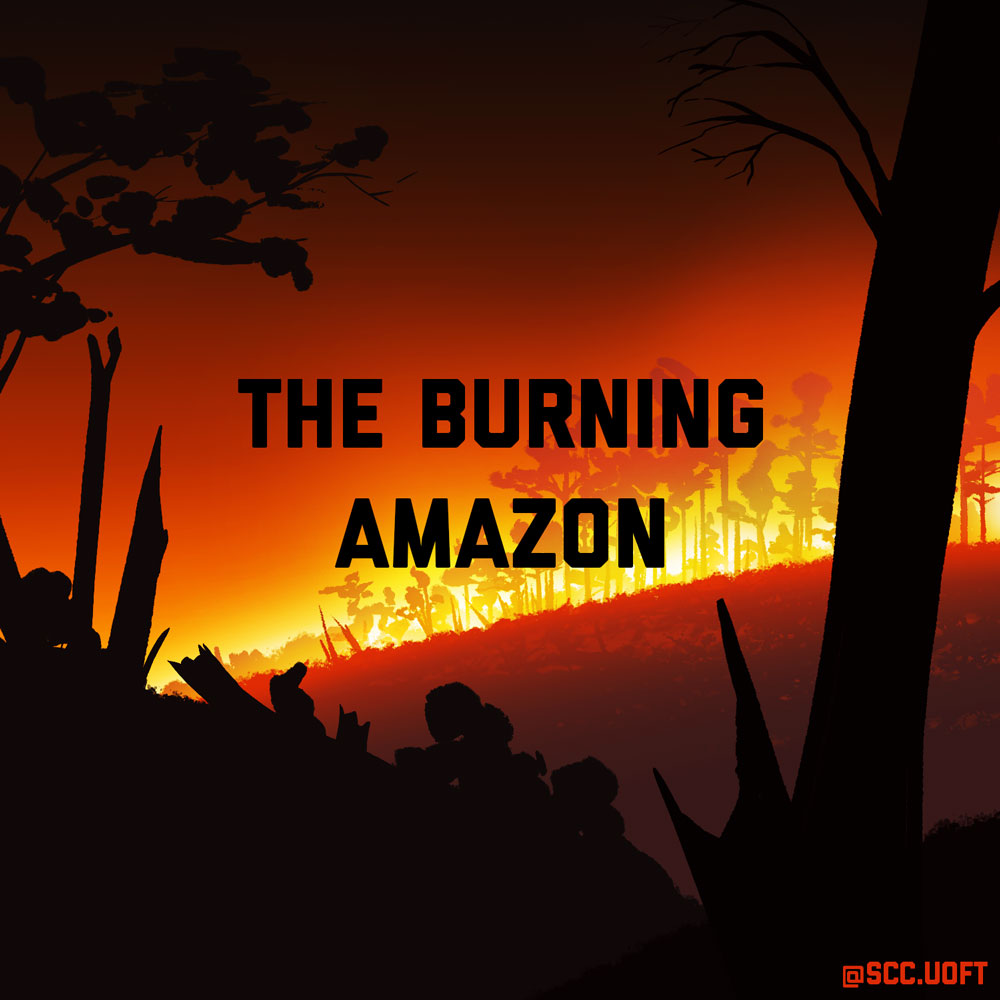
Written by Tammy Lee
Illustrated by Anna Tram
2019 has been quite remarkable in terms of raising awareness for climate change and environmental issues. Not only did people from over 150 countries participate in climate strikes in September, but thanks to social media, the burning of the Amazon forest also gained an incredible amount of attention. While many social media influencers and celebrities raised awareness of this issue, wildfires are not actually uncommon. In 2016, 68,484 fires in the rainforest were recorded by The National Institute for Space Research, and in 2019, they recorded more than 74,000! Given that the rainforest is often referred to as ‘the lungs of the Earth’, it is quite surprising that serious environmental threats like fires have not previously been discussed.
Why was the Amazon rainforest on fire, and who does it impact? The main driving force of wildfires in the Amazon is deforestation. Burning land in clear-cut areas brings out rich nutrients from the soil that help increase agricultural yields, but can also have devastating consequences for the surrounding forest. In addition to its impact on the global carbon cycle, the rainforest is also home to a diverse array of plants and animals, not to mention the many tribes who depend on the forest for survival. Politics also plays an important role in the fate of the forest, as the Brazilian government has not yet taken any actions to protect the ecosystem. In fact, the government has recently opened up the area for economic development. Jair Bolsonaro, a proponent of agribusiness, recently took office, indicating that profit will be favoured over preservation in the coming years.
What can you do to help save our home? There are many habits you can incorporate into your everyday life that can help prevent climate change and natural disasters such as the burning of the Amazon rainforest. The easiest ones are to use your own mugs, cutlery, grocery bags, and water bottles instead of disposable ones. If you don’t already, try to sort recyclable items into the blue bin. And, if you’re willing to take it to the next level, try eating less meat, especially beef. A major cause of deforestation in Brazil is that more space is needed to make way for the growing beef industry, and as a result clearing land for cattle is becoming a demand. Lowering the demand for beef might possibly slow the rate of deforestation!
Believe it or not, some people still deny climate change! Our job here is to spread the word, and most importantly to act. Whether it’s bringing your own straw to a bubble tea joint or becoming vegetarian, every action counts! After all, Earth is our only home, and we must do everything we can to keep it healthy for future generations.